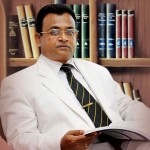Pilot project paves way for classrooms of future
View(s):D. Usha, a class VII teacher at a Chennai High School, had re-created an English activity sheet on a projector, big enough for her entire class to see and speculate. As she called out visual pointers to the questions relating to transitive and intransitive verbs, the audio-visual room grew boisterous with correct answers amid several wild and ingenious guesses.
She is one of the few teachers who could set aside time to make technology a part of her lesson plan, as envisioned by the Digital Equaliser Programme (DEP), which is being implemented on a pilot basis in 25 Chennai Corporation schools.
New tool in lesson plans
The programme, which is being conducted in partnership with the American India Foundation, will over three years, train teachers to embed technology in their teaching methodology. J. Sundarakrishnan, national director, DEP, American India Foundation, says,
“This programme aims to integrate technology and pedagogy and by the end of three years, we enable teachers to include technology as a tool in the lesson plans. The idea is to make them use five to six minutes of technology in every lesson plan over the three-year duration.” Each programme coordinator handles five schools and will visit each school once a week for the three year period, to train teachers in both creating content relevant to the curriculum using various software tools as well as sourcing videos, photographs and information from the internet. However, for this ambitious programme to succeed, a sufficient number of computers, good internet bandwidth and a healthy student-teacher ratio are a must, he observed. U. Muniramaiah, Headmaster, Chennai High School, MMDA 2, where the programme is being implemented, said “When the programme started in May, we had only two computers, but now we have 20 in addition to a fully-equipped audio-visual room. We will soon have internet as well. The students are much more involved now.”
A. Uma, one of the co-ordinators of the programme in the city who handles five schools talks about how they start small by encouraging teachers to make a power point presentation.
“Every week, we train teachers in concepts such as collaborative learning and brain-mapping. We also help interested teachers make presentations,” she says,.
Teachers, though enthusiastic, also say that setting aside time to source videos and information is a challenge they have to overcome as they are still grappling with the CCE pattern.
CCE component
Baskaran Dheenadayalan, state project manager, Tamil Nadu, American India Foundation, says that they have taken cognizance of this aspect by encouraging teachers to give students activities that can be done in a computer lab. Another challenge is the varying levels of computer literacy among teachers. “Most teachers have been trained but since post-training implementation has been limited, many have lost touch. We refresh their memory through training,” he says.
Encouraging response
The response from students has been encouraging, he adds. Ms. Usha, who is optimistic about the concept says that though it takes over two hours to prepare a presentation, she aims to have at least one multimedia presentation a week after seeing the interest of the students.
Follow @timesonlinelk
comments powered by Disqus



























